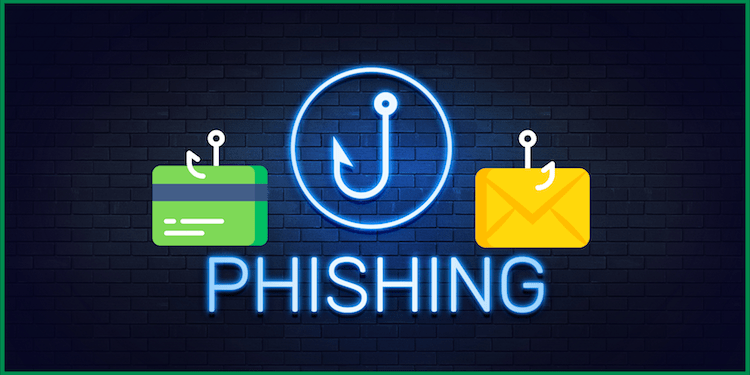The dangers of phishing attacks and other cyber threats have made cybersecurity more critical than ever due to the increasing amount of internet and technology scams.
Table of Contents
- Definition of Phishing Attack and Scam
- The Dangers of Phishing Attacks and Cyber Threats
- Common Types of Phishing Scams and Attacks
- Safety Tips against Phishing Attacks and Online Threats
What is Phishing Attack?
Phishing is a cyber-attack where criminals use fraudulent emails, text messages, hyperlinks, or websites to trick people into revealing and sharing sensitive information, such as login passwords and credentials, credit card numbers, or personal details.
Phishing is the main form of technology attack utilized by scammers to defraud individuals and businesses through Business Email Compromise (BEC) or Email Account Compromise (EAC).
Dangers of Phishing Attacks and Other Cyber Threats
Cybercriminals and hackers are constantly finding new ways to make the most of vulnerabilities in computer systems and networks, and one of the most common tactics they use is phishing.
These phishing scams can be very convincing, often using logos and designs that mimic legitimate companies or organizations. It can be challenging to notice the difference between legitimate and fraudulent sources.
One of the most dangerous aspects of phishing is that it can lead to a range of other cyber threats.
Once a criminal has accessed a victim’s account, they can use it to launch other attacks, such as malware infections or ransomware attacks.
They can also use stolen information to commit credit card fraud, identity fraud, or other types of financial crime.
Common Types of Phishing Attacks and Scams
- Email phishing: This is the most common form of phishing attack; this type of scam utilizes fraudulent tactics like fake hyperlinks to tempt email recipients into revealing and sharing personal information. Scammers often pretend to be genuine sources or companies.
- Angler phishing: A relatively new form of a phishing attack, it revolves mainly around social media. Scammers utilize fake hyperlinks and URLs, leading to cloned social media posts, tweets, or websites containing malware.
- Malware phishing: This is the deadliest form of phishing attack, as it can paralyze a technology system or network. Scammers plant malware disguised as a verified attachment or file; opening such an attachment or file can destroy the whole networking system.
- Smishing and Vishing: Smishing and Vishing are a form of phishing attacks that involves the telephone as a method of communication to scam victims. Smishing sends SMS (Short Message Service) to scam victims. Vishing is an oral scam telephone conversation.
- Spear phishing: A tailored form of phishing attack to particular individuals using known information gathered through research into their lives (Social, Job, Family). Scammers utilize this method because it is hard to detect if its fraud; it makes them believe the information comes from a reliable source.
- Whaling: Also a tailored form of phishing attack to specific individuals, but these individuals tend to be either big in society or their field of work, e.g., Companies Executives, Celebrities, Politicians, etc. Scammers sometimes can pretend to be company executives, connect with subordinates at a particular workplace, and order them to perform a financial transaction.
Safety Tips against Phishing Attacks and Online Threats
Protecting yourself from phishing and other cyber threats requires several steps for you to take:
- Be vigilant about suspicious emails or messages. If you receive emails or texts that seem suspicious, try not to click on links or download attachments as much as possible. Instead, go directly to the sender’s website by typing the URL address into your web browser or contact the company or organization directly to verify the message’s legitimacy.
- Keep your software up to date. One of the most common ways hackers exploit vulnerabilities is through outdated software. Keep your network, operating system, web browser, and other applications updated with the latest security patches and fixes.
- Use strong passwords and two-factor authentication. Always use strong, unique passwords for your online accounts, and enable two-factor authentication wherever possible. Enabling two-factor authentication will make it much more difficult for criminals to access your accounts even if they obtain your login credentials.
- Use antivirus and anti-malware software. Install and use reputable antivirus and anti-malware software on all your devices. Antivirus and Anti-malware will help prevent malware infections and other cyber threats.
- Educate yourself about cybersecurity. Stay informed about the best practices for staying safe online. Read articles and blogs about cybersecurity, and consider taking a cybersecurity course or attending a workshop to learn how to protect yourself from cyber threats.
Bottomline
Phishing attacks and other cyber threats harm individuals and organizations. But by following the safety tips outlined above and staying vigilant about potential scams, you can help to protect yourself and your data from these threats.
Do you enjoy this reading? Kindly share with family, friends, and colleagues. Thanks 🙂



